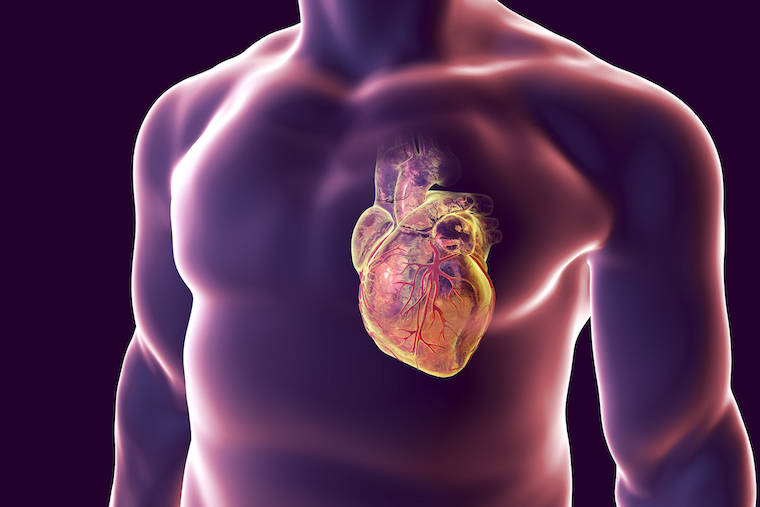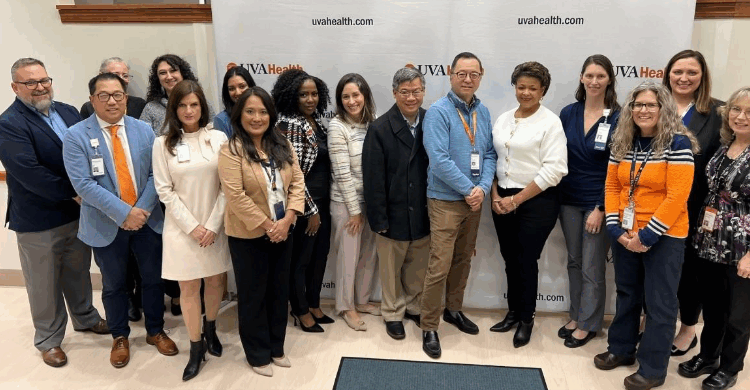
School of Medicine researchers have identified promising drugs that could repair damaged heart tissue.
New research from UVA Health scientists seeking to identify drugs to regenerate tissue after a heart attack is highlighting the promise of their approach.
The team, led by Jeff Saucerman, PhD, previously developed a method to identify drugs that might make new cardiomyocytes, the heart cells responsible for pumping blood. In their follow-up work, the researchers analyzed five of the 30 compounds they initially identified and determined how these compounds regenerate cardiomyocytes, which could help replace damaged heart tissue.
The scientists say this new understanding of the how the compounds work in heart cells will be invaluable in the development of the drugs to treat or reverse heart damage and heart failure, a potentially fatal condition that affects more than 5 million Americans.
“Once you lose cardiomyocytes after a heart attack and form a scar, there’s usually no going back. These compounds are promising in their potential of producing new cardiomyocytes to repopulate the heart,” said Saucerman, of the University of Virginia’s Department of Biomedical Engineering, a joint program of the School of Medicine and School of Engineering. “I hope that this research provides biomedical researchers with new ideas of biochemical pathways and drugs that may one day enable regeneration of heart tissue in patients.”
Irreversible Heart Damage?
Heart failure occurs when the heart loses the ability to pump enough blood to meet the body’s needs. This can lead to weakness, fatigue, shortness of breath, fluid buildup in the lungs and other symptoms that rob patients of their quality of life. It is irreversible and ultimately often fatal.
Heart failure can be triggered by heart attacks and other conditions that damage the heart tissue. Doctors have no way to repair this damage because the body stops making cardiomyocytes shortly after birth. That has Saucerman and his team eager to find drugs that can turn that natural production line back on.
Working with scientists from AstraZeneca, the UVA scientists combined a traditional approach – looking at live cells with microscopes – with advanced image-processing algorithms. This allowed them to identify 30 compounds that triggered cardiomyocyte production in culture dishes.
Those results, while promising, came with no guarantee they would work. The scientists needed a better understanding of the effects the drugs would have – how, precisely, they might stimulate cardiomyocyte production. So the UVA team selected five different compounds that acted on different cellular targets and set out to find answers.
The scientists were uncertain how the compounds worked because they targeted proteins unrelated to previous studies on cardiomyocyte production. To take a broader view, the researchers used a sophisticated “multi-omic” analysis, meaning they looked at the expression of all of the genes in the genome as well as a large set of proteins. Using machine learning, they connected the multi-omic data into a network that explained the cascade of effects the compounds would cause. They found that the drugs acted in similar ways to promote cardiomyocyte production and did so without toxicity – a promising sign.
The new insights bring the scientists closer to translating their lab work into new treatments to help patients, a major goal for both UVA Health and UVA’s upcoming Paul and Diane Manning Institute of Biotechnology.
“Based on these results, we’re now assembling the data into a large-scale computational model of cardiomyocyte production, as well as testing selected compounds in animal models,” said Saucerman, who is part of UVA’s Robert M. Berne Cardiovascular Research Center. “Normally, our ability to produce new cardiomyocytes is lost shortly after birth. One day, I hope new drugs can restore this regenerative capacity to treat heart attacks.”
Findings Published
The researchers have published their findings in the scientific journal iScience. The research team consisted of Laura A. Woo, Kaitlyn L. Wintruba, Bethany Wissmann, Svyatoslav Tkachenko, Ewa Kubicka, Emily Farber, Ola Engkvist, Ian Barrett, Kenneth L. Granberg, Alleyn T. Plowright, Matthew J. Wolf, David L. Brautigan, Stefan Bekiranov, Qing-Dong Wang and Saucerman.
Some of the team members are current or former employees of AstraZeneca, but Saucerman and the other UVA researchers have no financial interest in the work.
The research was supported by AstraZeneca, a grant from the UVA-AstraZeneca Strategic Cardiovascular Alliance, UVA’s Pinn Scholar Award and the National Institutes of Health, grants T32-HL007284, S10 OD021723, HL160665 and HL162925.
UVA’s research alliance with AstraZeneca is led by.Gary K. Owens, PhD, the director of UVA’s Robert M. Berne Cardiovascular Research Center. “Dr. Saucerman and his team of AstraZeneca and UVA scientists are to be commended for completion of this highly innovative research that may lead to marked improvements in treating patients with heart failure who currently have a life expectancy of less than 5 years unless they get a heart transplant,” Owens said.
To keep up with the latest medical research news from UVA, subscribe to the Making of Medicine blog.



